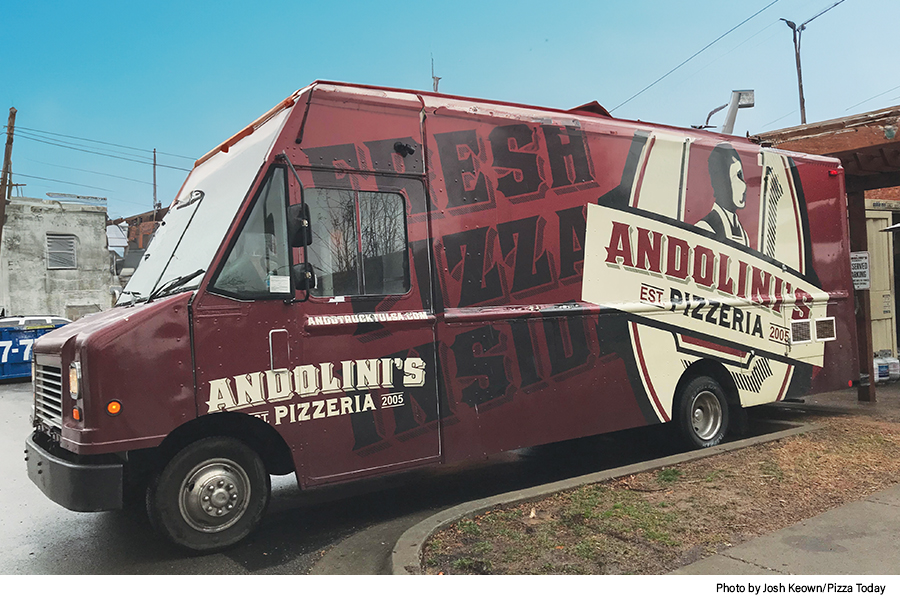Operators are bringing the classroom into the pizzerias for their patrons
You’ve probably heard of, or participated in, one of the notable pizza-making courses around the country and world that breaks down how to make almost any style of pizza imaginable over the course of a few days, week or even month. But did you know you can host your own pizza-making classes at your pizzeria? Theses classes aren’t targeted to aspiring pizza chefs and industry pros. Instead, pizza-making classes are being directed at customers, pizza enthusiasts and at home pizza chefs.
It’s an idea that is growing in interest in the pizzeria community. According to our 2024 Pizza Industry Trends Report, 10 percent of pizzerias offer fee-based classes and special events as additional revenue streams.
Luke Salvatore, co-owner of Providence Pizza in Kansas City, Missouri, has launched his first pizza-making class.
The decision was twofold. “I am adding classes due to demand and personal desire to teach.” Salvatore studied at Tony Gemignani’s former School of Pizza. “That gave me at least a foundation for what we could do,” he says.
But instead of focusing on industry pizzaioli, Salvatore is focusing on the home pizza cooks. “Due to the availability of pizza ovens, there is less of a difference between the home and professional chef than there was previously,” he says.
He didn’t just jump into the endeavor. He has worked to get everything in order and build a strong program. “For me, it’s just having a curriculum and a plan, so as to offer people the most value for their time and money,” he says.
Evan Eriksen added pizza-making classes to his revenue streams this year.
“We charge $37.50 at the moment for a personal hands-on class,” he says of the classes at Pie95 Pizza in Jacksonville, Florida. “We do this during non-business hours. Originally would do this on our day off, but now do it Saturday before we open. We wanted to price to be a fair and welcoming number. I feel places are price gauging others now and want no part of that.
“Everyone and anyone is invited to attend the pizza making class,” he continues. “We create an item on our square menu and send it out via square text and post a link on our social media. We cap the inventory to 14 people per class, so it is not stuffy.”
Complimentary water is available during service and participants can purchase adult beverages.
For Eriksen, the class is all about getting into the specifics of pizza dough and pizza making. “We start the class talking about the fermentation and proofing of the dough. This is the class part then the actual making will be the lab. We demonstrate how to flatten the dough, what flour we use for stretching and what we use for dough making and why. Everyone gets to handle the dough. We next move them all into the oven. This is fun! We put a metal pizza peel in the oven and show how we use the weight of the pizza to spin the pizza and talk about rotating. Then the lab begins. We do this two guests at a time and others watch or get to know each other. Show them all the ingredients and have them decide what they would like because when we sauce it we will have to work fast. Also give them a demo on how to sprinkle the cheese so it is even and avoid the middle. After they have topped their personal pizza, we transfer them to the oven. They cook the pies with a trained cook, cut it, top with any garnish and then enjoy their creation.”
Jay Hartz at Padulas Pizza in Spring Hill, Florida, takes a different approach to classes.
He partnered with Oak Hill Senior Living and Rehab Center to develop a program for its residents. “Their activities director (who has since moved on) was a customer of ours,” Hartz says. “She and my manager (at the time) started talking about the idea. We agreed to give it a try and bring 10 residents on a Tuesday morning before we opened. The residents did pretty much everything except cook the pizzas. I would talk about the pizza making process, educate them, etc. They tossed the dough, docked the pizza, sauced the pizza, cheesed it, added pepperoni if they wanted to and placed oregano on top. We had a system to make sure the correct pizza went back to the right resident so there was no concern with cross contamination. Some of the residents were able to cut their own pizza and others were not. They ate some at the store, and we packed up leftovers. I charged a small fee of $10 per person.
“We have had nothing but positive feedback from the staff at the facility, residents, family of residents and our community,” Hartz continues. “Some of the residents have even come back more than once, and that has been fun!”
There are several operational and safety items to consider before launching pizza-making classes. See below for a list of some vital considerations before you launch a class.
What you need to know to launch a pizza-making class
There are several operational and safety items to consider before launching pizza-making classes. Here are just a few of those considerations:
- First and foremost, do your homework. Know what you are getting into with offering pizza-making classes.
- Build a full program with goals, a curriculum, marketing, scheduling, rates, revenue projections, participant certificates or other tokens, etc.
- Notify your insurance agent with the specifics of your pizza-making class to ensure that the scope of the program is covered under your insurance, or if there is an added plan for such events.
- Consult your business attorney for legal advice about adding classes and to create liability agreements for the participants.
- Check with your municipality and health department to ensure this type of activity is permitted, as well as identifying rules, regulations and requirements regarding classes. Are there any special licenses or permits you must hold to operate classes?
- Keep safety a priority. Some pizza-making processes are more suited for demonstration purposes only, such as working with mixers, ovens or any other kitchen equipment that require trained professionals.
Denise Greer is Executive Editor at Pizza Today.









